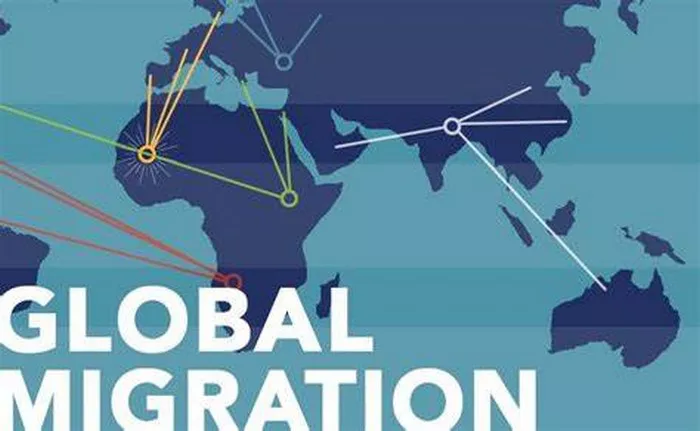Immigration, the movement of people from one country to another with the intention of settling permanently, is a multifaceted phenomenon with a myriad of underlying causes. While it is often discussed in political rhetoric and policy debates, the motivations behind immigration are diverse and deeply rooted in socioeconomic, political, and environmental factors. By examining these factors comprehensively, we can gain a better understanding of the main causes of immigration and the complex dynamics that drive people to leave their home countries in search of better opportunities elsewhere.
Economic Disparities and Poverty
One of the primary drivers of immigration is economic disparity between countries. In many developing nations, poverty, lack of job opportunities, and low wages push individuals and families to seek better prospects abroad. Economic migrants often migrate to countries with stronger economies in search of employment, higher wages, and improved living standards for themselves and their families. The promise of a better life and the hope of escaping poverty drive millions to embark on the challenging journey of immigration each year.
Conflict and Political Instability
Political instability, armed conflict, and persecution are major factors that force people to flee their home countries and seek refuge elsewhere. Wars, civil unrest, and human rights abuses create conditions of insecurity and fear, prompting individuals to seek safety and protection in other nations. Refugees, defined by the United Nations as people fleeing conflict or persecution, often have no choice but to leave everything behind and seek asylum in foreign countries, where they hope to rebuild their lives free from violence and oppression.
Environmental Degradation and Climate Change
The impacts of environmental degradation and climate change are increasingly contributing to migration patterns around the world. Rising sea levels, extreme weather events, droughts, and desertification are leading to the displacement of populations in vulnerable regions. In some cases, entire communities are forced to abandon their homes due to environmental factors beyond their control. This phenomenon, known as environmental migration or climate migration, is expected to become more pronounced in the coming years as the effects of climate change intensify.
Lack of Education and Healthcare
Inadequate access to education and healthcare can also drive migration, particularly among young people and families seeking better opportunities for themselves and their children. In many developing countries, limited access to quality education and healthcare services hinders social and economic mobility, leading individuals to seek alternatives abroad. Migration becomes a means of accessing better educational opportunities, healthcare facilities, and a higher quality of life for themselves and future generations.
Family Reunification and Social Networks
Family reunification is another significant factor driving immigration. Many migrants are motivated by the desire to reunite with family members who have already migrated to other countries. Family ties and social networks established through previous migration play a crucial role in shaping migration patterns, as individuals seek the support and familiarity of relatives and friends in destination countries. Family reunification policies in many countries also facilitate the legal migration of family members, contributing to the movement of people across borders.
Labor Demand and Immigration Policies
Labor demand in destination countries is a key factor influencing immigration trends. Many developed nations have aging populations and declining birth rates, resulting in labor shortages in certain sectors of the economy. As a result, these countries rely on immigration to fill gaps in the labor market and sustain economic growth. Immigration policies and visa programs designed to attract skilled workers, seasonal laborers, and professionals from abroad reflect the influence of labor demand on immigration patterns.
Globalization and Transnationalism
The process of globalization, characterized by increased interconnectedness and mobility across borders, has facilitated the movement of people, goods, and ideas on a global scale. Transnationalism, the idea that people maintain connections and identities that transcend national boundaries, is a defining feature of contemporary migration. Advances in technology and transportation have made it easier for individuals to migrate and maintain ties to their home countries, leading to the emergence of transnational communities and diaspora networks around the world.
Social and Cultural Factors
Social and cultural factors also play a significant role in shaping migration patterns. Discrimination, marginalization, and lack of opportunities based on factors such as race, ethnicity, religion, gender, or sexual orientation can compel individuals to seek refuge or better prospects in other countries. Additionally, cultural ties, language proficiency, and perceptions of social mobility influence destination choices and integration outcomes for migrants in host societies.
Conclusion
Immigration is a complex and multifaceted phenomenon driven by a combination of economic, political, environmental, social, and cultural factors. Understanding the main causes of immigration requires a comprehensive analysis of these interconnected dynamics and their impact on individuals, families, and societies. While immigration presents opportunities for economic development, cultural exchange, and social diversity, it also poses challenges related to integration, social cohesion, and governance. By addressing the root causes of migration and adopting policies that promote human rights, equality, and sustainable development, we can work towards creating a more inclusive and equitable global society for all.


